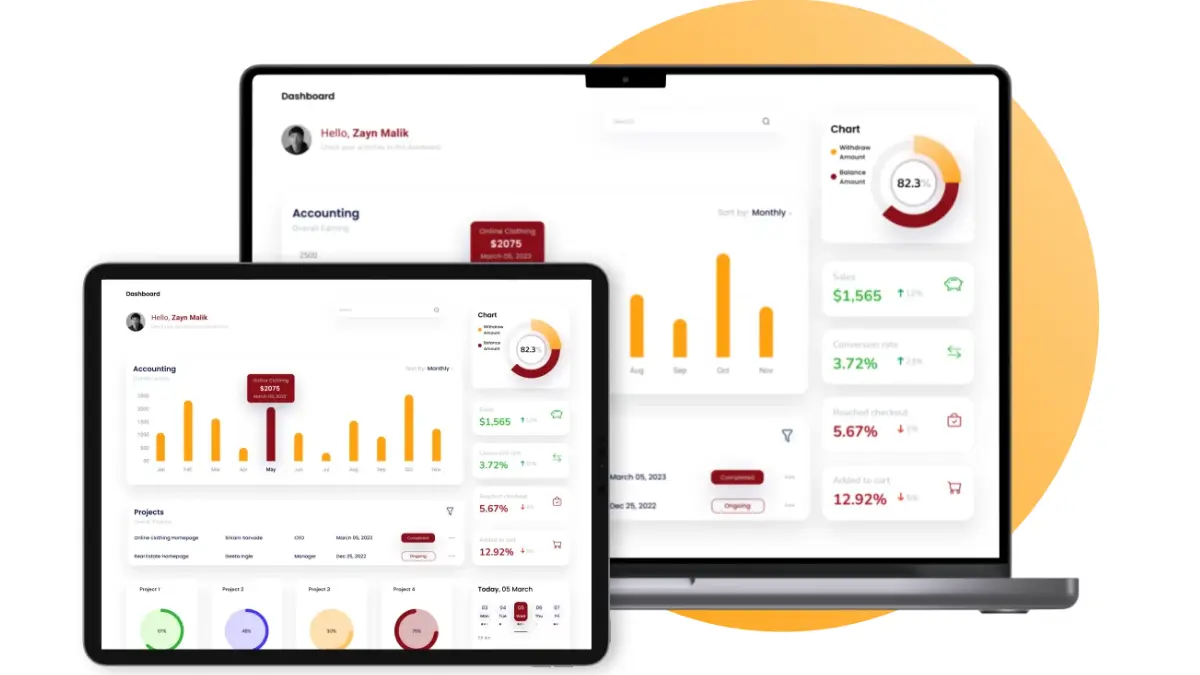Efficiently managing equipment assets can make or break the success of your operations. For many managers, keeping track of assets, ensuring timely maintenance, and reducing downtime are constant hurdles. Implementing a robust asset management system can significantly streamline these processes and enhance overall operational efficiency.
However, ensuring accurate real-time tracking of assets, mainly when dealing with multiple locations or mobile equipment, poses a significant challenge, often resulting in visibility issues and operational inefficiencies. Additionally, balancing maintenance schedules, costs, and the overall asset lifecycle requires strategic planning to avoid unnecessary spending while maximizing asset usage.
According to Enterprise Singapore, businesses that adopt automated asset management solutions have seen a 25% reduction in operational costs. This case highlights the transformative impact of efficient equipment asset management.
This article will explore critical strategies for enhancing equipment asset management and introduce software solutions to elevate your business performance. Stay tuned to uncover how to optimize your assets for maximum efficiency and profitability.
Table of Content:
Table of Content

Key Takeaways
|
What is Equipment Asset Management?
Equipment asset management refers to an organization’s system or procedures to monitor its equipment and fixed assets. Most businesses rely on asset tags and asset management software to efficiently maintain comprehensive records of their equipment and assets.
A robust equipment asset management system is essential for the smooth operation of any business. It ensures that valuable assets are tracked accurately and reduces the risks of loss or mismanagement, leading to better decision-making and cost control.
Moreover, a reliable physical asset management system supports inventory asset tracking, minimizing downtime and extending the lifespan of equipment. Implementing the right asset management software in Singapore is critical to streamlining operations, and solutions like HashMicro can effectively automate these processes.
Also read: What is an Asset Management System? Its Benefits & Features
The Importance of Equipment Asset Management Software
Implementing equipment asset management software is crucial for modern businesses to maintain efficiency and gain control over assets. It simplifies the tracking, managing, and optimizing physical assets, ensuring that all assets are accounted for and used effectively.
1. Enhancing asset visibility and control
Knowing your equipment’s location and status is essential in physical asset management. The software provides real-time visibility and detailed insights into assets, allowing businesses to control asset usage and prevent loss or misuse.
2. Reducing operational costs
Equipment asset management software significantly reduces operational costs by automating tasks like asset tracking and maintenance scheduling. This automation minimizes the need for manual labor, thus increasing overall efficiency.
3. Improving maintenance management
Effective asset maintenance is key to extending the lifespan of equipment. The software streamlines maintenance management by providing automated reminders and tracking maintenance history, ensuring all assets are serviced on time.
4. Increasing Return on Investment (ROI)
Properly managed assets lead to increased ROI. The software helps maximize asset utilization, reduce maintenance costs, and extend the lifespan of equipment, ensuring businesses get the most value from their investments.
If you want to explore the right software solution for your business and further boost your ROI, try the free demo offered by HashMicro. This hands-on experience lets you see how their asset management system can optimize your operations and asset performance.
5. Facilitating better decision-making
Asset management software supports informed decision-making with real-time data and detailed reports. Managers can quickly access asset performance data to make strategic decisions that align with business goals.
6. Ensuring compliance and risk management
Staying compliant with industry regulations is critical to avoiding legal issues. Asset management software helps businesses track and meet compliance requirements and integrates risk management practices to identify and mitigate potential risks effectively.
7. Simplifying asset lifecycle management
Managing an asset’s entire lifecycle—from acquisition to disposal—can be complex. The software simplifies this process by streamlining acquisition, tracking depreciation, and ensuring proper asset disposal.
8. Enhancing data security
Protecting sensitive asset data is paramount. The software offers robust security features to safeguard data from unauthorized access, ensuring data integrity and preventing breaches.
9. Customizing to business needs
No two businesses are identical, and asset management software can be customized to meet specific business requirements. This flexibility allows businesses to tailor the software to fit their operational needs, improving overall effectiveness.
If you are ready to explore the pricing options for the right software, click the banner below to learn about HashMicro’s asset management software pricing scheme. This step will help you find a solution that aligns perfectly with your budget and business needs.
Critical Factors for the Success of Equipment Asset Management
Effective equipment asset management is crucial for maximizing the value and efficiency of your business operations. By understanding the key factors that drive success, you can implement strategies that not only extend the lifespan of your assets but also reduce costs and improve productivity.
Explore these essential factors to ensure your fixed asset management efforts yield the best results.
-
Monetize and validate financial gains
Tracking and monetizing the financial benefits of your equipment asset management program is key to gaining stakeholder support. You can justify the ongoing investment by demonstrating the value of activities such as condition monitoring and asset maintenance in monetary terms.
Standardizing how you measure variables like parts, labor, and production costs ensures a consistent, repeatable process for translating maintenance efforts into tangible financial outcomes.
-
Identify and resolve underperforming assets
Identifying assets that frequently underperform, often called “bad actors,” is essential for optimizing your equipment management strategy. These assets can represent significant risks and incur high costs if not addressed promptly.
Tackling these issues not only prevents further inefficiencies but also boosts the morale of your maintenance team. By resolving these problem areas, you set the foundation for a culture of continuous improvement, encouraging further identification and correction of inefficiencies.
-
Prioritize quick wins for immediate results
In the initial stages of your equipment asset management program, it’s crucial to focus on easily achievable solutions—often called “low-hanging fruit.” Addressing these simple issues quickly demonstrates immediate value, building confidence in the program among both management and employees. These early successes create momentum, providing the necessary support and foundation to tackle more complex challenges in the future.
-
Maintain detailed project records
Keeping an accurate historical and current record of all asset-related projects is vital for long-term success. Detailed project tracking allows you to monitor progress, measure performance metrics, and present the financial benefits of each effort.
This historical data is a valuable reference for future initiatives and facilitates knowledge transfer across teams, ensuring ongoing improvement in asset management practices.
-
Remove inefficiencies in asset management
One of the most crucial aspects of successful equipment asset management is identifying and eliminating inefficiencies. This involves reducing redundant tasks, minimizing human errors, and streamlining workflows within your asset management system.
By carefully analyzing current processes, you can pinpoint areas that cause delays or mistakes, thus optimizing operations, lowering costs, and freeing up resources for more productive activities.
-
Foster and sustain a culture of asset management
A shift in organizational culture toward proactive asset management is essential for long-term success. Regularly sharing metrics, such as response times to asset issues and stakeholder communication, helps sustain this cultural shift.
Over time, asset management practices become ingrained in daily operations, promoting accountability and ensuring that employees at all levels contribute to continuous improvement efforts.
Automate your Equipment Asset Management with HashMicro’s Smart Asset Solution
HashMicro Asset Management Software is one of the top choices for equipment management solutions in Singapore. As the right solution for managing equipment assets, HashMicro helps businesses optimize asset usage efficiently.
If you want to explore this solution further, you can start by trying the vendor’s free demo. This allows you to experience its capabilities before committing to a full implementation.
HashMicro provides comprehensive features that make it a versatile tool for any business such as:
- Asset Comprehensive Cost Reporting: Capture and track the total expenses of each asset, from maintenance to repairs. This feature provides clear insights into cost management, helping businesses make informed financial decisions.
- Asset Maintenance Budget: Set and control budgets for maintenance activities to prevent overspending. Proper budgeting ensures that assets are maintained without compromising financial efficiency.
- Asset Stock Take with Barcode: Use barcodes to manage easily and audit equipment during stock takes. This streamlines inventory management, reducing errors and saving time.
- Asset GPS Tracking: Monitor equipment locations in real-time with GPS technology. This feature enhances asset security and ensures efficient resource allocation.
- Parent & Child Asset Management: Organize assets by linking parent assets with their dependent units. This enables better management of complex asset structures and optimizes maintenance workflows.
- QR Code Scanning for Facilities Request: Simplify maintenance requests by scanning asset QR codes. This allows for faster, more efficient service management and improved asset care.
- Repair Order Management (Integrated with Inventory Management): Manage repair orders seamlessly while tracking spare parts through inventory integration. Ensure timely repairs by having the right parts available when needed.
- Fully Integrated with Accounting to Track Depreciation: Track asset depreciation directly within the accounting system for accurate financial reporting. This integration supports compliance and long-term financial planning.
- Asset Move Tracking: Record and monitor the movement of assets between locations or departments. This ensures accurate asset tracking and improves accountability.
- Asset & Vehicle Management and Maintenance Requests: To minimize downtime, manage equipment and vehicle maintenance requests efficiently. This feature keeps your operations running smoothly while extending asset lifespan.
These features ensure that all your assets are monitored and maintained correctly, reducing costs and downtime.
Beyond these features, HashMicro stands out due to its ability to integrate with other systems and modules, allowing it to adapt to your business needs. Additionally, you can easily customize the features to align with your expectations, offering a truly tailored asset management experience.
Conclusion
Efficient equipment asset management is vital for businesses looking to maximize productivity and minimize costs. By focusing on critical factors such as regular maintenance, accurate tracking, and data-driven decision-making, companies can ensure the longevity and performance of their assets.
Implementing the right software is essential to supporting these efforts. HashMicro’s Smart Asset Solution offers an ideal platform for end-to-end automating asset management, providing comprehensive tools that streamline tracking, maintenance, and reporting.
This solution enhances operational efficiency and ensures that your business stays ahead in managing valuable assets. Try HashMicro’s free demo to discover how their Smart Asset Solution can transform your business processes and enhance asset management efficiency.

FAQ About Equipment Asset Management
-
What are the 3 main asset management types?
The three main asset types are equities (stocks), fixed income (bonds), and cash. Every investor should be familiar with these types of assets when considering an investment strategy. When building a portfolio, a primary goal is to end up with a diversified mix of two or three main investment asset types.
-
Why is it essential to manage equipment as assets?
The first and most important benefit of implementing an equipment asset management system is that it decreases misplaced, lost, and stolen work equipment. By creating records of when and where equipment is used (and even who has used it), you can identify who is responsible for it at any time.
-
Why is equipment inventory management important?
In this day and age, keeping track of your business’s equipment is essential for the success of any organization. Equipment inventory management is a critical part of the process because it ensures that all your equipment is properly tracked, maintained, and accounted for.




































